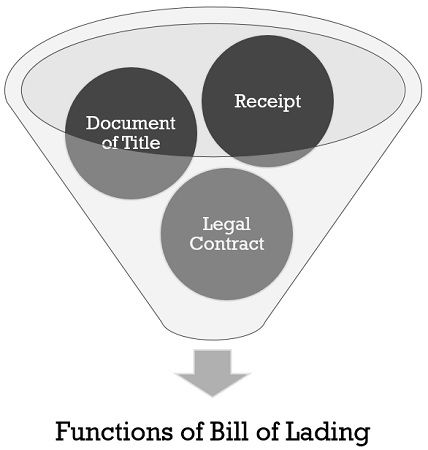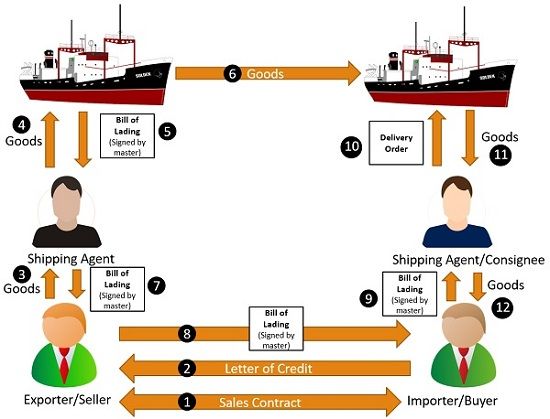Definition: Bill of Lading is an important document, required to ship goods from one point to another. The carrier generates and issues a bill of lading to the shipper of the goods, acknowledging the receipt of goods for shipment in acceptable condition.
In simple words, the bill of lading is written evidence of a contract between shipper and carrier for the carriage and delivery of sea-consignment, for a definite freight.
What is contained in Bill of Lading?
The bill of lading consist of the following details:
- Details of the carrier, shipper and consignee.
- Place of loading
- Shipping Destination
- Mode of Transportation
- Details of goods, in terms of type, quantity, measurement (weight, dimension, pieces), units, etc.
- Terms of shipment
Carrier is the transportation company, which provides transportation services. It may include freight forwarders, third-party logistics companies, owner drivers etc. The shipper is the person who either supplies the goods or owns them, so the shipper can be the exporter or his agent.
Functions of Bill of Lading
A bill of lading performs three major functions:
- It acts as a document of title, which permits the sale of goods in transit and availing financial credit.
- It is also a receipt of shipped goods, issued by the carrier to the shipper, stating that the carrier has received the goods and they are in good condition.
- It establishes a legal carriage contract between the carrier (transportation company) and the shipper.
It is a record of the goods being traded, which are shipped and represents the carrier which takes the goods to their final destination.
Process of Bill of Lading
The process of the bill of lading can be understood with the help of the points given below:
- An importer (buyer) and exporter (seller/shipper) enters into a sales contract, for which the importer issues a letter of credit as a guarantee for payment.
- Now, the exporter wants to ship a consignment of goods overseas for which he approaches a transportation company (carrier) by reserving space on the vessel. It can be done by the exporter himself or he can hire a shipping agent for the same.
- Thereafter, the carrier tells the date and time of delivery of the goods to the shipper (exporter).
- On the delivery of goods on board, the person in charge of the ship hands over a receipt called as mate’s receipt to the Port Trust Authorities. It is a temporary receipt issued by the officer in charge of the vessel, to indicate that the goods are loaded in the vessel.
- The exporter has to make payment of the port dues, to collect collects the mate’s receipt from the Port Trust Authorities. Mate’s receipt needs to be handed over to the carrier to get the bill of lading.
- Once the dues are clear the exporter or his agent will hand over the receipt to the carrier’s agent.
- Now, the carrier’s agent will check the details provided in the receipt against the goods shipped, at the time of loading and recognize the same.
- Once the checking is done, freight will be calculated accordingly. The bill of lading will be prepared on the basis of mate’s receipt signed by the shipmaster and provided to the shipper.
- Thereafter the shipper has the option to directly dispatch the bill of lading to the consignee or through the bank (in case of import/export)
- The consignee may decide to sell the goods when it is in transit or he may also endorse the bill in favour of the purchaser.
- In the end, the consignee or the endorsee will surrender the bill of lading at the port of discharge to take the delivery of goods, and issue a delivery order.
It must be noted that the actual negotiable bill of lading is made in three originals, each of them is signed by the master. Out of which one is kept by the consignor of the goods, one by the shipmaster and the last one is forwarded to the consignee, who has to surrender the same, to get the delivery of the goods. On receiving the goods, the other two bills become null and void.

Leave a Reply